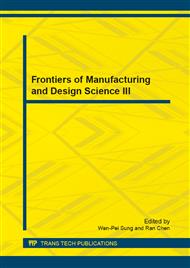[1]
Ahmad A. Pesaran, Battery thermal management in EVs and HEVs: issues and solutions, Advanded Automotive Battery Conference, Las Vegas, Nevada, Feb. 6-8, (2001)
Google Scholar
[2]
Ahmad A. Pesaran, Energy storage R&D thermal management studies and modeling, Annual Merit Review & Peer Evaluation Meeting, NREL/PR-540-45531, Arlington, Virginia, May 18-22, (2009)
Google Scholar
[3]
Gi-Heon Kim, Ahmad A. Pesaran, R. Spotnitz, A three-dimensional thermal abuse model for lithium-ion cells, J. Power Sources 170 (2007) 476-489
DOI: 10.1016/j.jpowsour.2007.04.018
Google Scholar
[4]
Gi-Heon Kim, K. Smith, Evaluation study for large prismatic lithium-ion cell designs using multi-scale multi-dimensional battery model, 215th ECS Meeting, NREL/PR-540-46076, San Francisco, May 24-29, (2009)
DOI: 10.1149/ma2009-01/4/252
Google Scholar
[5]
Ahmad A. Pesaran, Gi-Heon Kim, M. Keyser, Integration issues of cells into battery packs for plug-in and hybrid electric vehicles, International battery, Hybrid and Fuel Cell Electric Vehicle Symposium, NREL/CP-540-45779, Stavanger, Norway, May 13-16, (2009)
DOI: 10.1109/ievc.2012.6183240
Google Scholar
[6]
Gi-Heon Kim, K-J. Lee, L. Chaney, K. Smith, E. Darcy, A. Pesaran, Prediction of multi-physics behaviors of large lithium-ion batteries during internal and external short circuti, Boston, MA, Nov. 3, (2010)
DOI: 10.1149/ma2010-02/5/331
Google Scholar
[7]
A. Veluchamy, C. H. Doh, D. H. Kim, J. H. Lee, H. M. Shin, B. S. Jin, H. S. Kim, S. I. Moon, Thermal analysis of LixCoO2 cathode material of lithium ion battery, J. Power Sources 189 (2009) 855-858
DOI: 10.1016/j.jpowsour.2008.07.090
Google Scholar
[8]
E. P. Roth, D. H. Doughty, Thermal abuse performance of high-power 18650 Li-ion cells, J. Power Sources 128 (2004) 308-318
DOI: 10.1016/j.jpowsour.2003.09.068
Google Scholar
[9]
E. P. Roth, D. H. Doughty, D. L. Pile, Effects of separator breakdown on abuse response of 18650 Li-ion cells, J. Power Sources 174 (2007) 579-583
DOI: 10.1016/j.jpowsour.2007.06.163
Google Scholar
[10]
R. E. Williford, V. V. Viswanathan, J. G. Zhang, Effects of entropy changes in anodes and cathodes on the thermal behavior of lithium ion batteries, J. Power Sources, 189 (2009) 101-107
DOI: 10.1016/j.jpowsour.2008.10.078
Google Scholar
[11]
H. Maleki, J. N. Howard, Role of cathode and anode in heat generation of Li-ion cells as a function of state of charge, J. Power Sources 137 (2004) 117-127
DOI: 10.1016/j.jpowsour.2004.05.053
Google Scholar


